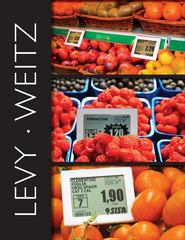Program: Masters of Engineering Management Course: Project Risk Management Assignment: Final project report **Project descriptionstart** Summary The FastLane Efficiency Project is aimed at optimizing the
Program: Masters of Engineering Management
Course: Project Risk Management
Assignment: Final project report
**Project descriptionstart**
Summary
The FastLane Efficiency Project is aimed at optimizing the waiting time at drive-thru locations for fast-food restaurants. In today's fast-paced world, customers demand quick and convenient service, and reducing wait times is crucial for enhancing customer satisfaction, increasing operational efficiency, and ultimately driving profitability. This project outlines a comprehensive strategy to achieve these goals by streamlining fast-food restaurant drive-thru operations, leveraging technology, and empowering team members.
Definition
The "FastLane Efficiency Project" is centered on improving the waiting time experience for customers at Fast food restaurant drive-thru locations. We recognize that excessive wait times can lead to customer dissatisfaction and deter potential repeat business. The project focuses on reducing the average wait time and enhancing the overall drive-thru experience through a combination of operational improvements, technology integration, and training
Objectives:
- Reduce Average Wait Time: The primary objective is to reduce the average waiting time at the Fast-food restaurant drive-thru locations by at least 15% within the first six months of implementation. This will be achieved through process optimization and efficient order handling.
- Enhance Order Accuracy: Improve order accuracy to reduce the need for corrections or refunds, which can contribute to longer waiting times and customer dissatisfaction. Our goal is to achieve an accuracy rate of 95% or higher.
- Leverage Technology: Implement innovative technology solutions, such as mobile ordering, order prediction algorithms, and contactless payment options, to expedite the order-to-delivery process.
List of benefits
- Improved Customer Satisfaction: Shorter waiting times and accurate orders lead to increased customer satisfaction, resulting in repeat business and positive word-of-mouth recommendations.
- Increased Sales and Revenue: Enhancing customer experience can lead to higher sales and revenue as satisfied customers are more likely to spend more and return for future visits.
- Safety and Legal Compliance: Reducing waiting times can contribute to a safer drive-through environment, mitigating potential safety and legal concerns.
- Competitive Advantage: A more efficient drive-through operation can provide a competitive edge, attracting customers away from competitors.
- Higher Operational Efficiency:Streamlining processes and reducing waste can improve overall operational efficiency, leading to better resource utilization.
- Customer Retention: Shorter waiting times and improved service quality can help retain existing customers, reducing the need to constantly attract new ones.
- Process Standardization:Standard operating procedures and improved processes lead to consistency and order accuracy, reducing errors and rework.
Execution Strategy
- Menu Accessibility: Ensure the menu board is prominently displayed for easy reading and understanding, and that all menu items are available, with clear communication of any out-of-stock items to customers.
- Ordering Experience: The staff should efficiently and accurately handle customer orders from placement to pick up, ensuring minimal wait times, correct item preparation, order verification, proper packaging, and flexibility for customization requests.
- Payment Convenience and Variety: Offer a seamless and efficient payment process, accommodating both cash and card transactions, while also providing a range of payment options, including mobile payment methods, to improve customer satisfaction.
- Waiting Time: Customers should not experience excessive wait times at any stage of the process, including waiting in line at the pickup window and waiting for their order to be ready.
- Staff Friendliness and Communication: Courteous and clear communication from restaurant staff is essential to make the customer feel valued and understood.
- Drive-Thru Lane Design: The drive-thru lane should be well-designed to handle traffic efficiently, prevent congestion, and guide customers to the various points in the process.
- Hygiene and Food Safety: The restaurant should maintain high standards of hygiene and food safety to ensure that the food is prepared and handled correctly.
- Digital Ordering Integration: Ensure seamless integration of digital ordering platforms with the drive-thru process, including efficient handling of mobile app orders.
- Environmental Sustainability: Focus on environmental sustainability in packaging and waste management, such as using biodegradable packaging materials and implementing efficient waste disposal methods.
- Nutritional Information Availability: Provide clear and accessible nutritional information for all menu items, catering to health-conscious customers.
- Traffic Flow Management: Manage the flow of traffic entering and exiting the drive-thru efficiently, with clear signage, designated entry and exit points, and staff assistance during peak hours.
- Technology and Equipment Reliability: Ensure high reliability of technology and equipment, including order taking intercoms, payment processing units, and kitchen equipment.
- Feedback and Resolution System:Implement a system for collecting customer feedback related to the drive-thru experience and a mechanism for quickly addressing any issues or complaints.
Timeline and budget
The "FastLane Efficiency Project" is strategically designed to optimize fast-food restaurant drive-thru operations within a strict timeline of 9 months and a budget of 6 M CAN$. With a laser focus on efficiency and cost-effectiveness, every aspect of the project's execution is meticulously planned to ensure that resources are utilized judiciously and milestones are achieved within the stipulated timeframe. From implementing technology solutions to streamlining operational processes, each initiative is carefully aligned with the project's timeline and budget constraints. Regular monitoring and evaluation mechanisms are in place to track progress, identify potential deviations, and make timely adjustments to ensure that the project remains on schedule and within budgetary limits. By adhering to this disciplined approach, we are confident in our ability to deliver tangible improvements to drive-thru efficiency while maximizing the value of our investment.
**Project description ends**
Q: Please prepare detailed (1) project risks identified; (2) Quantitative Risk Analysis; (3) Risk Response Strategies; and (4) Monitoring and Controlling Risks strategies; for the above project related to Project Risk Management.
Step by Step Solution
There are 3 Steps involved in it
Step: 1

See step-by-step solutions with expert insights and AI powered tools for academic success
Step: 2

Step: 3

Ace Your Homework with AI
Get the answers you need in no time with our AI-driven, step-by-step assistance
Get Started


